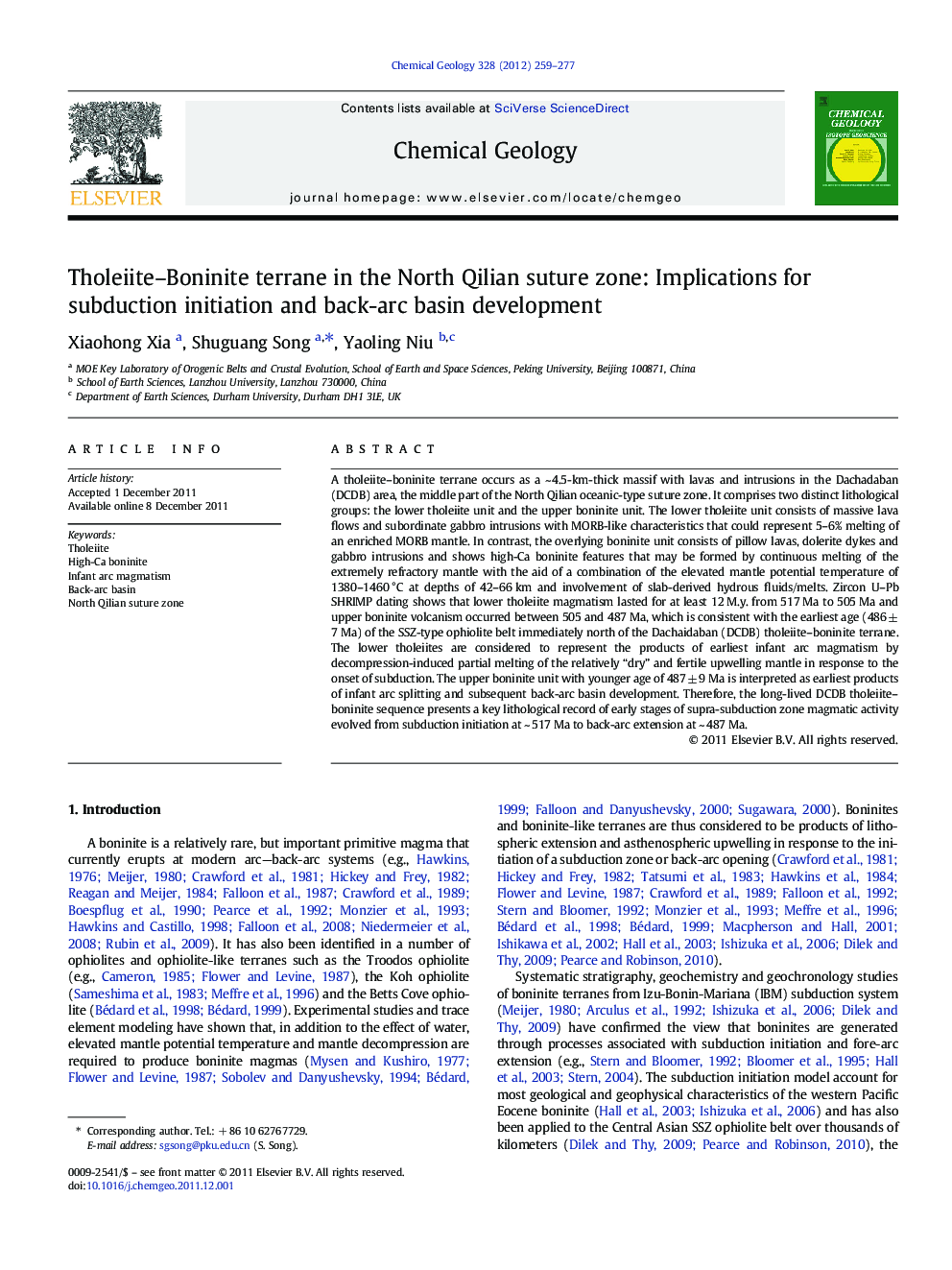| کد مقاله | کد نشریه | سال انتشار | مقاله انگلیسی | نسخه تمام متن |
|---|---|---|---|---|
| 4699307 | 1637637 | 2012 | 19 صفحه PDF | دانلود رایگان |

A tholeiite–boninite terrane occurs as a ~ 4.5-km-thick massif with lavas and intrusions in the Dachadaban (DCDB) area, the middle part of the North Qilian oceanic-type suture zone. It comprises two distinct lithological groups: the lower tholeiite unit and the upper boninite unit. The lower tholeiite unit consists of massive lava flows and subordinate gabbro intrusions with MORB-like characteristics that could represent 5–6% melting of an enriched MORB mantle. In contrast, the overlying boninite unit consists of pillow lavas, dolerite dykes and gabbro intrusions and shows high-Ca boninite features that may be formed by continuous melting of the extremely refractory mantle with the aid of a combination of the elevated mantle potential temperature of 1380–1460 °C at depths of 42–66 km and involvement of slab-derived hydrous fluids/melts. Zircon U–Pb SHRIMP dating shows that lower tholeiite magmatism lasted for at least 12 M.y. from 517 Ma to 505 Ma and upper boninite volcanism occurred between 505 and 487 Ma, which is consistent with the earliest age (486 ± 7 Ma) of the SSZ-type ophiolite belt immediately north of the Dachaidaban (DCDB) tholeiite–boninite terrane. The lower tholeiites are considered to represent the products of earliest infant arc magmatism by decompression-induced partial melting of the relatively “dry” and fertile upwelling mantle in response to the onset of subduction. The upper boninite unit with younger age of 487 ± 9 Ma is interpreted as earliest products of infant arc splitting and subsequent back-arc basin development. Therefore, the long-lived DCDB tholeiite–boninite sequence presents a key lithological record of early stages of supra-subduction zone magmatic activity evolved from subduction initiation at ~ 517 Ma to back-arc extension at ~ 487 Ma.
► Tholeiite–boninite terrane with lower tholeiitic unit and upper boninite unit.
► Infant arc magmaism at about 520 Ma.
► Long-lived (~ 30 Myrs) magmatism from tholeiite to boninite.
► Back-arc extension led to the infant arc splitting and eventual back-arc basin spreading.
► Early Paleozoic oceanic suture zone.
Journal: Chemical Geology - Volume 328, 18 October 2012, Pages 259–277